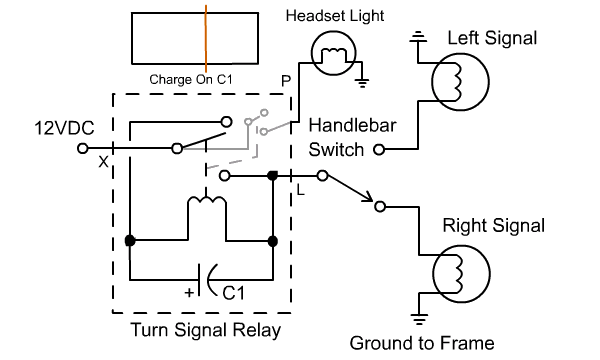The turn signals on the P200 are fairly basic in design. There are two types of signals: AC and DC. The DC based style is shown in the picture, but the AC signals contain the following parts and a small DC converter.

The cycle goes as follows:
When the handlebar switch is operated, a path to ground opens up for the capacitor, C1, indside the flasher relay. The DC voltage enters C1 and the capacitor begins to take in a charge. As soon as it charges to a certain voltage, it energizes the relay coil and the switch moves to the second position. in this second position, the battery is connected directly to the turn signal and the light turns on. However, C1's charging circuit has been disrupted, so it will begin to discharge. When it falls to a specific voltage, it will no longer hold the relay coil and the switch will click back to the starting position.
The relay coil also controls a second switch which mimics the movements of the main switch. it's common lead is also connected to the power supply, so when the relay switches, regardless of the selection on the handlebar, it will flash. This circuit controls the turn signal indicator on the headset.
All Material Copyright 2001-2025 by Richard Hoar. Use at your own risk.